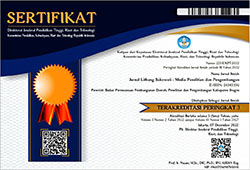PERBANDINGAN TINGKAT KEBAHAGIAAN ANTARA GENERASI SANDWICH DAN NON-GENERASI SANDWICH
DOI:
https://doi.org/10.32630/sukowati.v6i1.254Kata Kunci:
generasi sandwich, kebahagiaan, kesehatan, kesejahteraanAbstrak
Indikator kesejahteraan penduduk tidak hanya diukur berdasarkan moneter, tetapi juga kesejahteraan subjektif atau kebahagiaan. Penelitian mengenai kebahagiaan sudah banyak dilakukan, baik di negara maju maupun berkembang. Namun, belum terdapat penelitian yang membahas tentang tingkat kebahagiaan generasi sandwich. Penelitian ini bertujuan untuk mempelajari perbedaan tingkat kebahagiaan generasi sandwich dan non-generasi sandwich berdasarkan jumlah anggota keluarga yang ditanggung, waktu luang yang dimiliki, kondisi kesehatan, serta jumlah pendapatan rumah tangga per bulan. Penelitian ini dilakukan dengan mengumpulkan data terhadap 2 kelompok: generasi sandwich dan non-generasi sandwich yang terdiri dari 158 responden survei di 4 Provinsi di Indonesia, yaitu Daerah Khusus Ibukota (DKI) Jakarta, Aceh, Jawa Barat, dan Jawa Tengah dan 3 orang informan. Penelitian ini mengombinasikan metode kuantitatif (analisis regresi jalur) dan kualitatif (wawancara mendalam). Temuan dalam penelitian adalah: (1) Tidak terdapat perbedaan tingkat kebahagiaan antara generasi sandwich dan non-generasi sandwich, (2) Variabel yang berpengaruh langsung terhadap kebahagiaan adalah kesehatan dan pendapatan, sedangkan jumlah tanggungan keluarga dan waktu luang tidak berpengaruh langsung, (3) Keberadaan orang tua tidak membuat generasi sandwich merasa terbebani.
Unduhan
Diterbitkan
Cara Mengutip
Terbitan
Bagian
Lisensi
Hak Cipta (c) 2021 Jurnal Litbang Sukowati : Media Penelitian dan Pengembangan

Artikel ini berlisensi Creative Commons Attribution 4.0 International License.


















